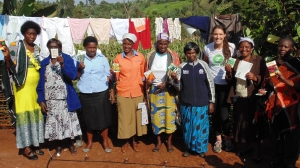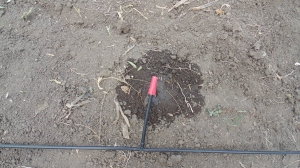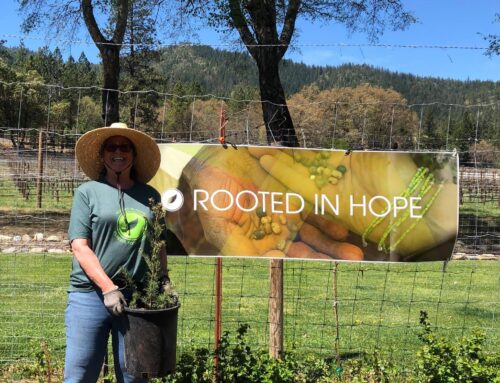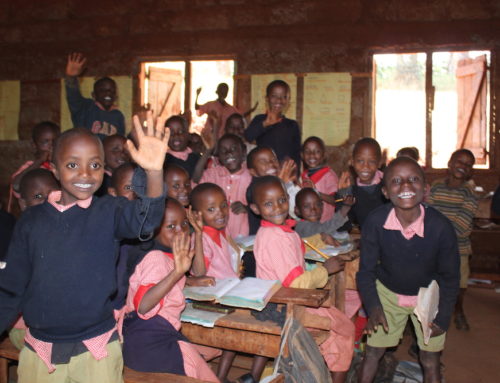How do rural farmers persevere through enduring droughts and changing climates? Where do they find nutritious foods to sustain their families after persistent crop failures? What source of income do they rely on to meet their needs when there are no crops to be sold? These pressing issues are a daily reality for the more than 2.5 billion people around the world who depend on subsistence agriculture for a livelihood. With burgeoning populations and diminishing resources, smallholder farmers face harsher conditions than ever before. Climate change is causing farms to be more vulnerable to droughts, floods, pests, and other natural threats, only exacerbating the problems that small farmers face. With the increasing frequency, duration, and severity of drought conditions across much of the African continent, smallholder farmers are looking for new ways to ensure that their harvests are secured against unpredictable rains. Despite the dire need for climate-adaptation solutions, less than 6% of all cultivated land in Africa is irrigated, and almost all poor farmers are dependent on rainfed agriculture. Given that irrigated plots can more than double crop yields as compared to rainfed plots, the potential to achieve food, water, and income security through irrigation remains untapped across the African continent. Drip-irrigation in particular can play a key role in increasing crop yields, conserving water, and creating a sustainable source of income for smallholder farmers in rural Africa.
Food Security
The thirteen women that make up the Merciful Women’s Self-Help Group in Kinunga, Kenya are in a daily battle against the effects of climate change. Facing shorter rainy seasons, a shrinking plot of arable land, and a proliferation of crop-damaging insects, they were eager to experiment with new techniques to increase their agricultural yields. Many of the women are single mothers of young children, and the crops grown on their small farm are the primary source of food for themselves and their families. By introducing a gravity-fed drip-irrigation system as a means of supplementing the ever-changing rainfall patterns, the women are able to supply water directly to the roots of crops simply by opening a valve. This affordable, efficient, and low-tech innovation has allowed the Kinunga Women’s Group to expand the variety of crops in their ‘kitchen garden’ and harvest twice as much food during the dry seasons.
Water Security
Water is an expensive and scarce commodity at the Baraka Orphanage in Nyeri, Kenya. The one-acre plot of land that makes up the orphanage includes a house, dormitory, classrooms, and a small farm that serves as a source of food for the children and caretakers. While most households in this highly populated county have access to piped-in water, the cost of providing all the water needs for the more than twenty children is too high to allow for crop irrigation. Often times, the farm fails to produce enough food to feed everyone, and the caretakers are forced to buy crops from the market. When funds are insufficient to pay for piped water, the children are required to walk far distances to retrieve water from a stream or well to meet their drinking, cooking, and hygiene needs. With the use of drip-irrigation, the crops are now able to be watered using a 5-gallon bucket that can last for over one week, resulting in significantly improved crop yields. Since more food is being grown at home and less money is being spent on crops at the market, the orphanage is now able to afford the piped-in water it needs to provide for all the children’s daily needs.
Income Security
Rhobai Musimbi lives in Kakamega, a region of Kenya that receives a relatively high amount of rainfall during its two rainy seasons. The group she leads consists of poor rural women, most of whom rely on agriculture as a source livelihood. Given the abundant rainfall in her area, Rhobai never considered irrigation as a means of income for her women’s group. The idea of growing and selling crops during the dry season did not seem feasible, as markets are often devoid of fruits and vegetables after periods of no rain. With the installation of a drip-irrigation system on their small farm, the women are now able to grow and harvest crops year-round. “We can earn up to four times as much money selling crops in the off-season, since they are in high demand and there is limited supply,” says Rhobai of her newfound source of income. “The women are just very, very happy now.”
For more information on Rooted In Hope’s drip-irrigation programs click here. To donate a drip-irrigation kit to a farmer in Kenya click here.
Post by Katie Emick
















HOW CAN U HELP US IN OUR COUNTY TO EDUCATE SMALLSCALE FARMERS ABOUT DRIP IRRIGATION SINCE OUR AREA IS DRY AND RECIEVES LITTLE AMOUNT OF RAINFALL????
Iam promoting use of drip irrigation for propduction of high value horticultural crops in Bomet county Kenya.I will be very happy if you partner with us.
hi im a farmer in kwale county i would like to know more about drip irrigation fredrick could you help me out on learning more on this
i would like to learn more how do i go about it
I would like to know much about drip irrigation, since im inspired to do agri business in tomatoes through drip irrigation. im from Baringo county. the price of drip pipes for 1 arcer of land.
hello, i am from Ethiopia i am not a farmer but i own my grand parents land and i want to use new ways of technology in the land in my research i found out irrigation is the best but i don’t have any experience or knowledge if you work in Ethiopia or if you can send me any written or video document i can understand so easily thank you for your help
have a nice day .
I would like to buy your products . How much does it cost per acre to instal?
I am interested in drip irrigation, especially for a small scale holder. please how much will it cost me to install the various piping components for a field of half acre.
Am Moses based in Bukomero, Kiboga District in Uganda. Am going to practice what I have learnt from you. I will plant tomatoes and irrigate them.
I am a new farmer who is planning to start small scale farm business in Ethiopia, Dire Dawa rural village. I am looking for some one who can help me to get dirip kit for the new business I am thinking.
so glad to know about you.where do i find you in kenya. other than offices, do you have exibition farms where farmers can learn on usage and benefits of the kits? i would like to visit your centres.i have a great ambition and wpassion to learn and help others in my community.am secretary of a farmrs community organisation that represents over 750households in tana river,a drought striken and challenging county.waiting to hear from you with great hope,
i need more information about cost and installation of the system on a 1/4 acre plot around ongata rongai. Thanks.
This indeed is “Rooted in Hope” can we do a joint venture to reach the smallholder farmer with the drip kit technology? We also work in livelihood-Lifting millions of African rural folks out of poverty- KickStart International-
http://www.kickstart.org
Interested in the drip kits,how can one purchase,ur location, mobile no?